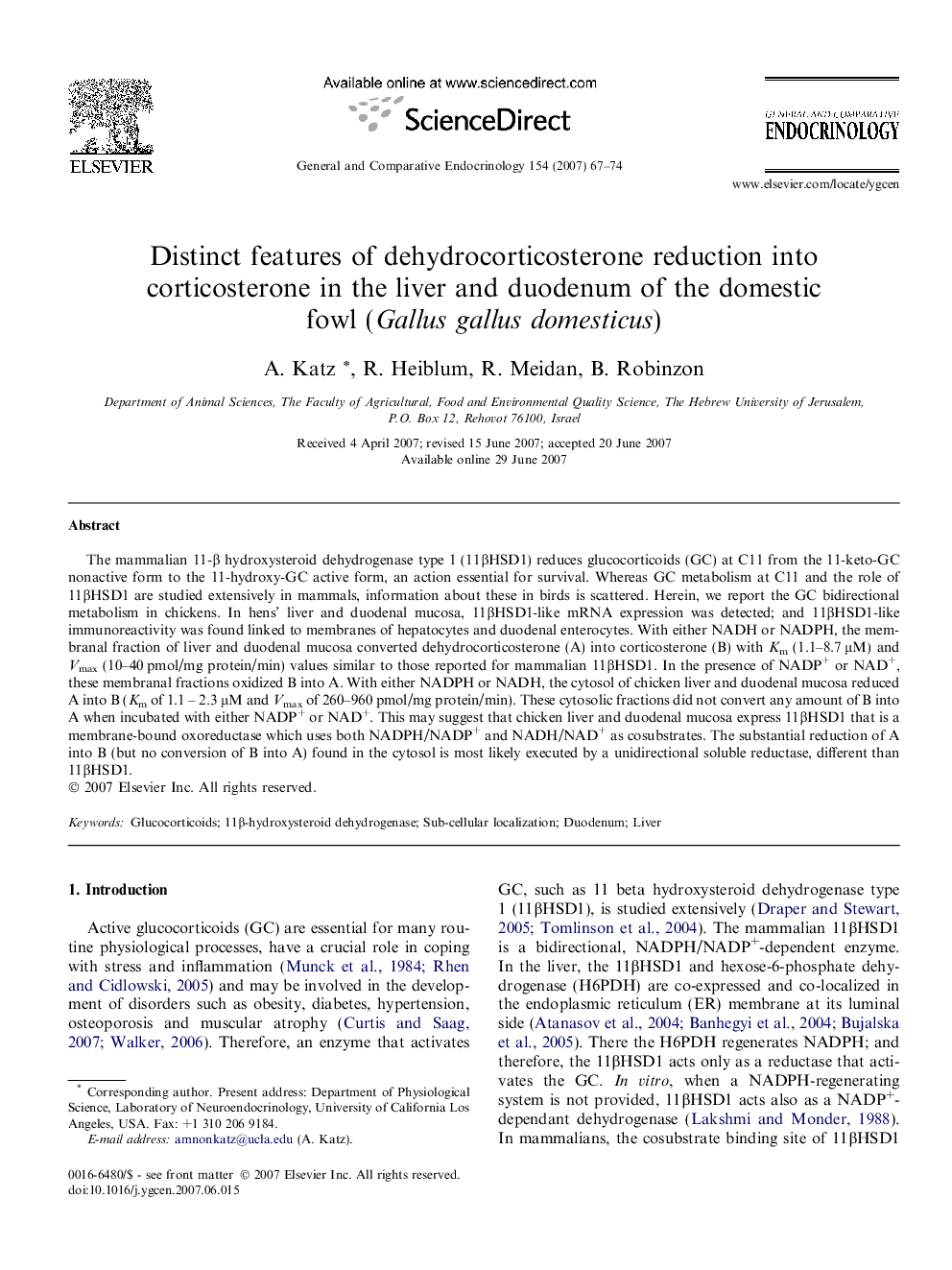| Article ID | Journal | Published Year | Pages | File Type |
|---|---|---|---|---|
| 2801672 | General and Comparative Endocrinology | 2007 | 8 Pages |
The mammalian 11-β hydroxysteroid dehydrogenase type 1 (11βHSD1) reduces glucocorticoids (GC) at C11 from the 11-keto-GC nonactive form to the 11-hydroxy-GC active form, an action essential for survival. Whereas GC metabolism at C11 and the role of 11βHSD1 are studied extensively in mammals, information about these in birds is scattered. Herein, we report the GC bidirectional metabolism in chickens. In hens’ liver and duodenal mucosa, 11βHSD1-like mRNA expression was detected; and 11βHSD1-like immunoreactivity was found linked to membranes of hepatocytes and duodenal enterocytes. With either NADH or NADPH, the membranal fraction of liver and duodenal mucosa converted dehydrocorticosterone (A) into corticosterone (B) with Km (1.1–8.7 μM) and Vmax (10–40 pmol/mg protein/min) values similar to those reported for mammalian 11βHSD1. In the presence of NADP+ or NAD+, these membranal fractions oxidized B into A. With either NADPH or NADH, the cytosol of chicken liver and duodenal mucosa reduced A into B (Km of 1.1 – 2.3 μM and Vmax of 260–960 pmol/mg protein/min). These cytosolic fractions did not convert any amount of B into A when incubated with either NADP+ or NAD+. This may suggest that chicken liver and duodenal mucosa express 11βHSD1 that is a membrane-bound oxoreductase which uses both NADPH/NADP+ and NADH/NAD+ as cosubstrates. The substantial reduction of A into B (but no conversion of B into A) found in the cytosol is most likely executed by a unidirectional soluble reductase, different than 11βHSD1.
